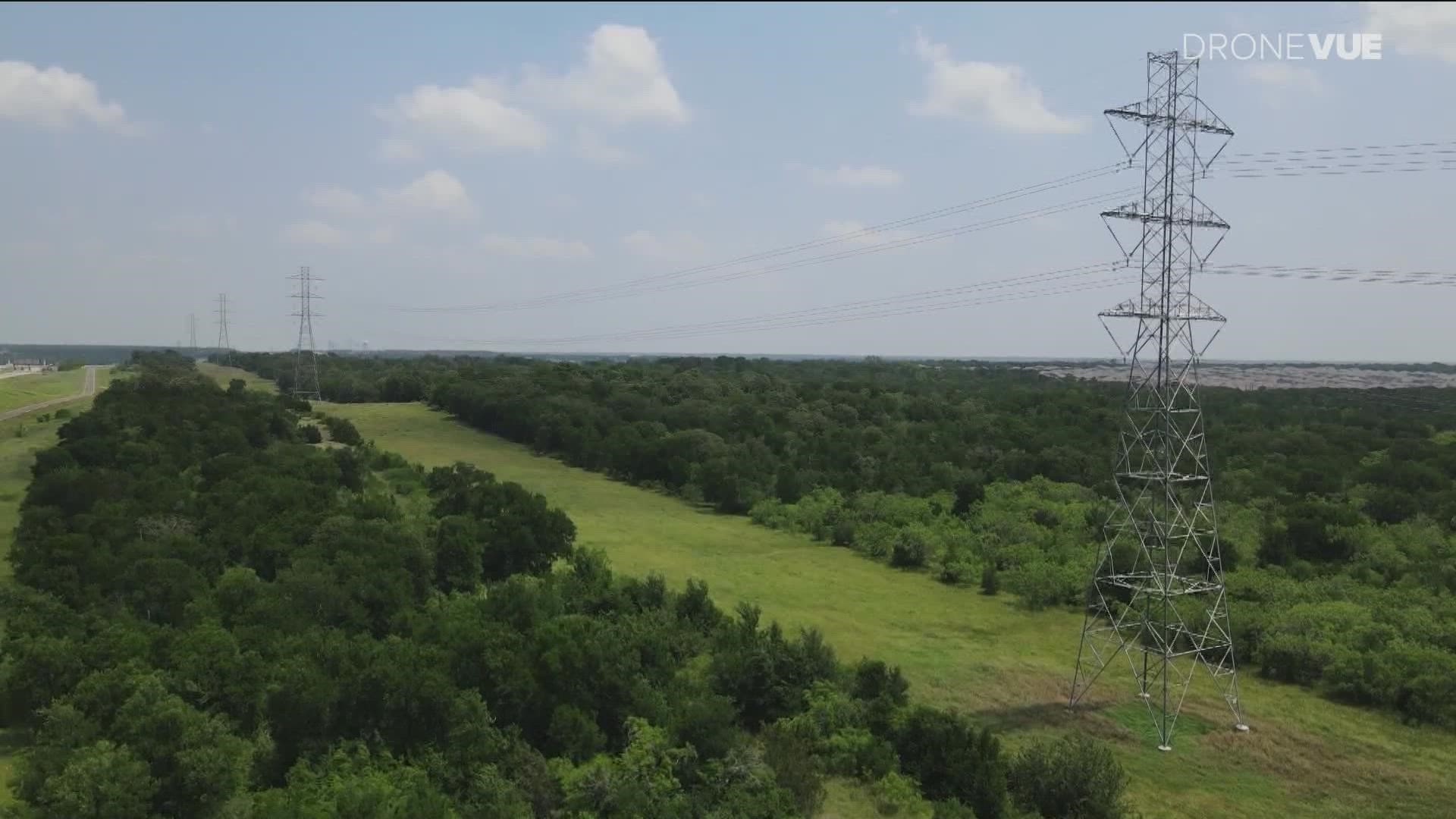AUSTIN, Texas — A new Texas law requires electric companies to give the State detailed information about how they will respond to a weather emergency.
Senate Bill 3, passed by the 87th Texas legislature, requires the Public Utility Commission of Texas (PUC) to analyze weather emergency operations plans of all power entities.
This change comes from the February 2021 deadly winter storm, which killed hundreds of people in Texas. Millions went without power as temperatures remained in single digits for days.
Before this law, electric entities were only required to give the State a summary of how they would handle extreme weather.
PUC Commissioners hired Ascenttra, Inc. to review and analyze the 691 emergency operations plans (EOP) filed with the commission.
The power companies include electric utilities, power generation companies, municipally-owned utilities, electric cooperatives and retail electric providers.
Ascenttra analyzed the information on a 10-point scale. The average score for EOP content was 7.33.
“The average score in this section reflects an overarching trend that demonstrates that plans scored better on the administrative requirements while lacking operational aspects such as response processes and procedures like communication (both internal and external), ensuring adequate staffing, maintaining critical supplies, implementing procedures for weather-related emergencies, and activating the EOP,” the report showed.
The report shows about one in four entities needs better emergency contact information. Most companies need better extreme weather response training.
“Entities can leverage such a program to train personnel, recognize operational shortfalls, and test corrective actions," the report showed.
"The EOPs reviewed demonstrated little emphasis on conducting drills for extreme weather events, as reflected by 23% of organizations that included procedures with sufficient details."
Texas requires an incident command system to be in place. It’s a national standard for coordinating emergency response.
“Although ICS training is required by 16 TAC § 25.53 and the affidavits affirm conformance, analysis showed only 14% of the EOPs had integrated the model into operations,” the report showed.
Analysts pointed out that four online courses (IS-100, IS-200, IS-700, and IS-800) provided by the Federal Emergency Management Agency (FEMA) would take less than 13 hours to complete.
“This is a good first step in coordinating operations and communication with community emergency management by ensuring a common emergency response framework is used by all participants,” the report showed.
RELATED: Rally demanding action on high electricity bills held outside Public Utility Commission meeting
The KVUE Defenders looked at Austin Energy’s Emergency Operation Plan. You can find Austin Emergy's EOP here.
Confidential details are redacted by law.
Austin Energy’s nearly 200-page emergency operations plan showed emergency contacts, some training details, staffing procedures, supply chain protocols and an incident command system.
The plan also includes how to respond to other emergencies, such as a cyber attack or bomb threat.
The PUC Project 53385 lists entities’ filings from across the state.
Bluebonnet Electric Cooperative made its executive summary public and kept the entire plan confidential.
State law requires plans to be filed publicly.
“If portions of a plan are designated as confidential, the plan shall be provided to the commission in a redacted form for public inspection with the confidential portions removed,” Texas Utilities Code § 186.007 showed.
PEOPLE ARE ALSO READING:

